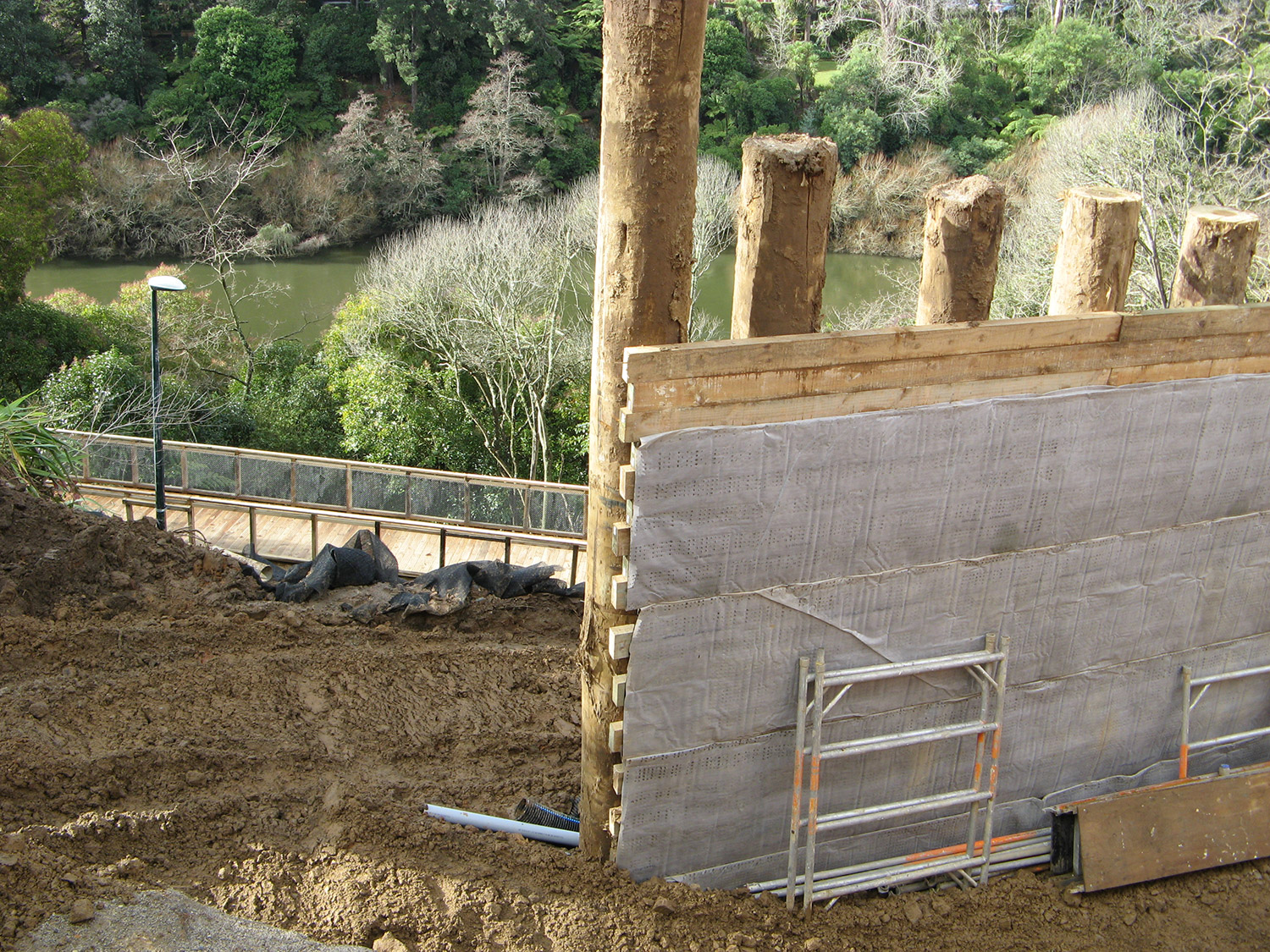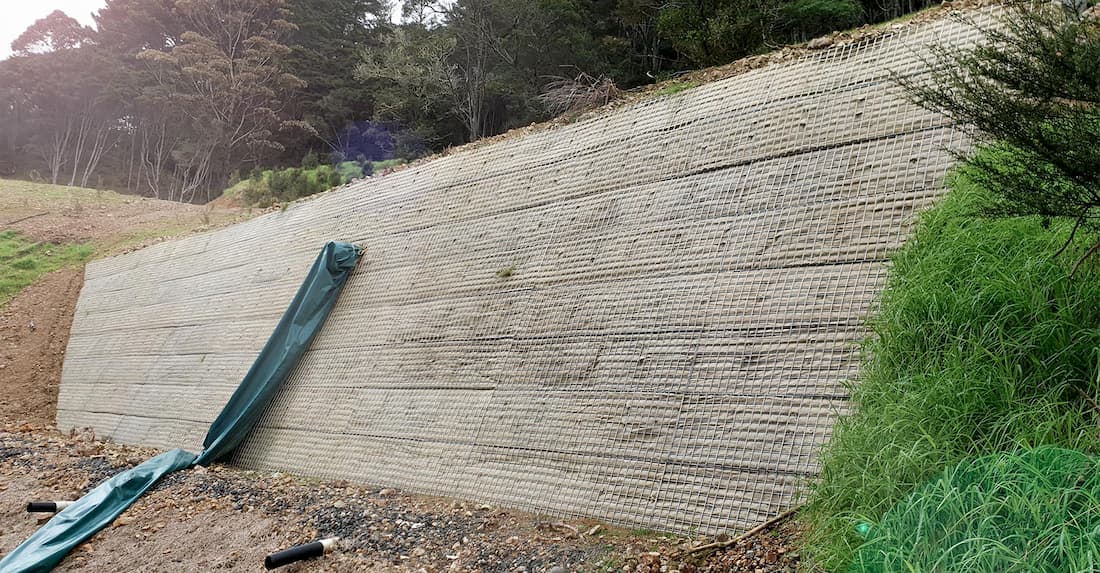Retaining walls are one of the most common landscape features in New Zealand for commercial and residential developments, and also one of the most expensive and least understood. In this article we cover off 5 key things you need to consider when choosing a retaining wall.
1. Lifecycle cost
The most common type of retaining wall in New Zealand is the timber pole wall, constructed with round treated pine posts and rails. This is often the cheapest option for low walls, up to 1.5 – 2 metres high and are often built by homeowners or weekend DIY warriors.

However, this type of wall can be quite unsightly, seldom has the required design life and therefore becomes mouldy and unsightly with time – not to mention the horrible lean when it wasn’t designed correctly, or the drainage has blocked. When we consider the resale value of a property, the small saving of choosing this wall type is not so attractive. For walls of 2m plus a concrete faced wall may well be cheaper to construct and almost certainly cheaper overall.
2. Durability
Most retaining walls will require a building permit, and along with that a requirement for a 50-year design life. Although some wall types such as timber faced can look very tired long before this with mould and decay affecting both the aesthetics and the durability.
Vegetated faced walls are available and with the correct design attention can provide over 50 years design life. These are typically covered with grasses and not commonly used in residential applications.
Concrete is a timeless finish and looks just as good in 50 years and more. Even extreme environmental conditions such as coastal zones are no threat to a good quality concrete facing system.

3. Aesthetics
Retaining walls are essentially a functional item, designed to retain soil and provide a practical change in ground level, but they are by their very nature often highly visible as well. Consider the overall impact of the wall on the property, and the options around texture, colour, and patterns. Generally, a concrete block wall will give the most options in this regard.
4. Buildability
Whether you intend to construct the wall yourself or get in a specialist contractor, there are many aspects to consider that are not immediately obvious. Some of these are access to the site for machinery, temporary support to the cut face during construction, adequate drainage, and any speciality equipment required. A wall system that is well thought out and designed, along with a specialist supplier that understands the system can take away many hours of frustration and delays.

5. Design
Like it or not, a retaining wall is a structure, and it needs to be designed as such. Site conditions such as the strength of the soil, presence of groundwater and any loads on the wall from buildings to traffic all need to be considered.
The Ministry of Business Innovation and Employment (MBIE) provides guidance on when a structure needs a building consent. Regardless of this, you don’t want the wall to fail as it will detract from your property value, and can be far more expensive to fix than to construct correctly in the first place.
MagnumStone provides an attractive alternative
MagnumStone is a new addition to the retaining wall market in New Zealand and hits the sweet spot for design, construction, and aesthetics. It’s large enough to build at significant heights without reinforcement and small enough to use readily available equipment and be versatile for curves and corners. Combined with the inbuilt drainage areas and innovative interlocking system, MagnumStone allows for fast placement and a very versatile and robust result.
A dedicated design program is available for all professional engineers allowing a streamlined design process with MagnumStone.
Call Cirtex on 0800 247 839 or email us info@cirtex.co.nz for more information on our retaining options.


